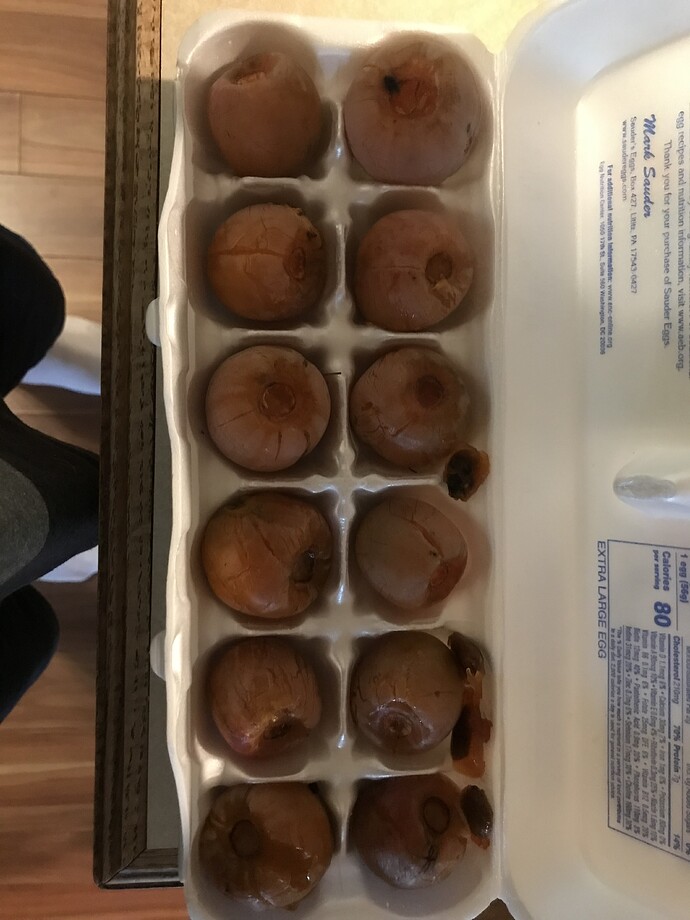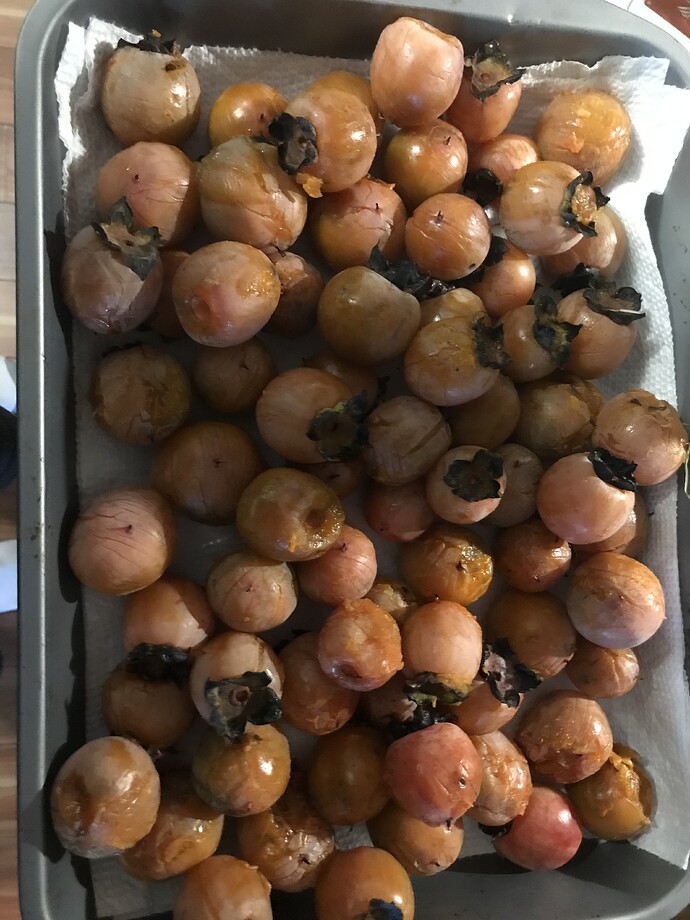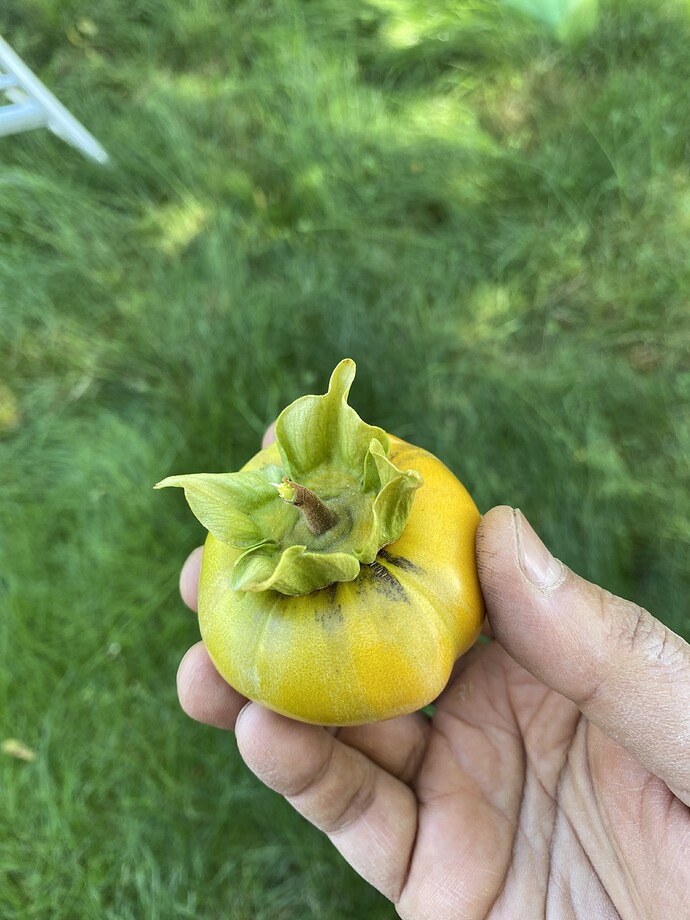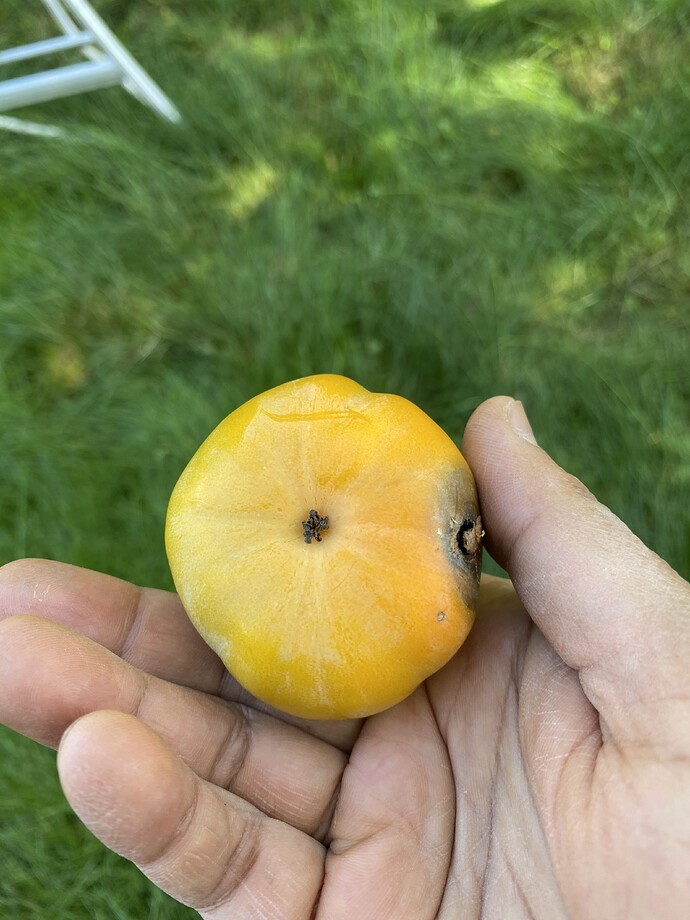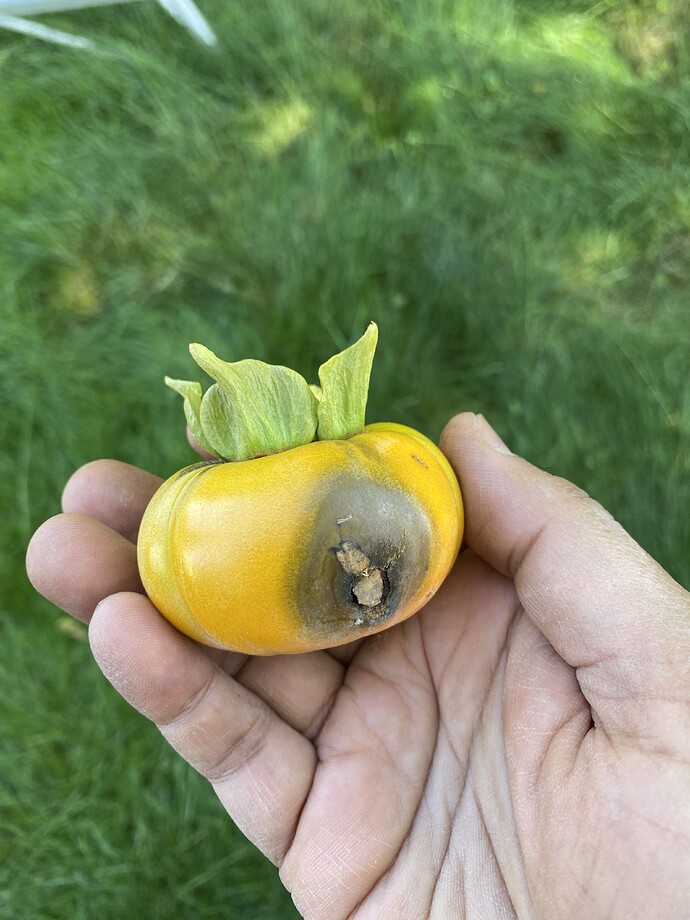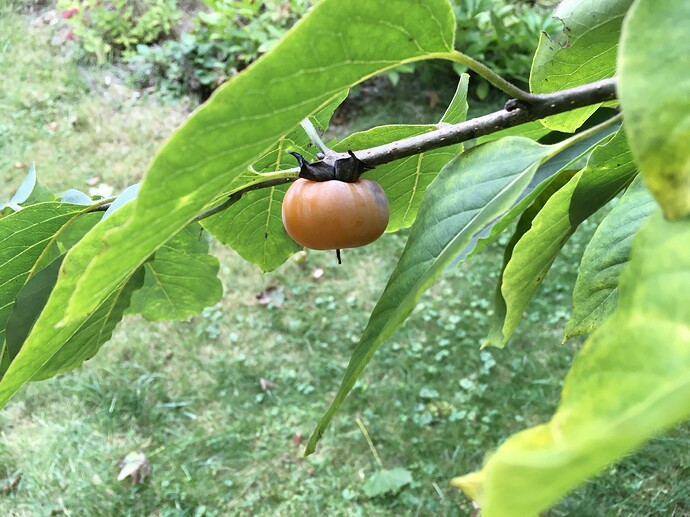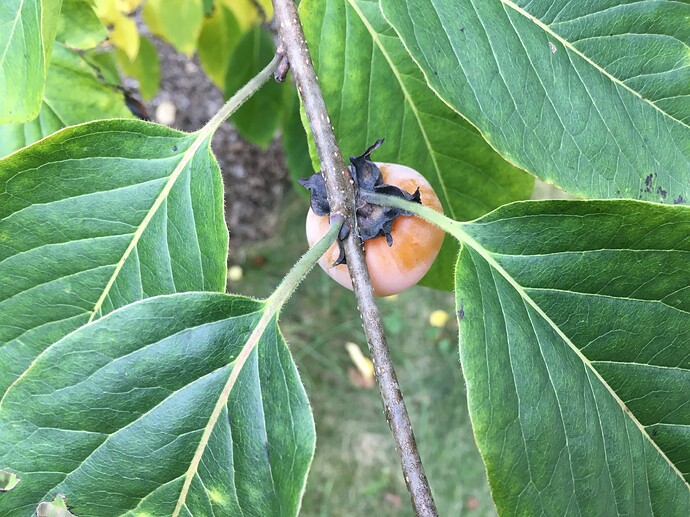You are correct. It’s just easier to say self pollinating so not to get into all of the science and difficult words. In a way it is self pollinating though as it does not require another tree to set fruit.
I think its better, and just as easy, to say self fruitful. That could be through parthenocarpy or self-pollinization or whatever.
I grow quite a few figs so understand parthenocarpic. I didn’t realize persimmons where also I assumed it was not a very common trait. Thanks people’s.
Another question regarding feeding late in the season. Next month I’ll be harvesting these persimmons. I wouldn’t want them to drop or taste bad.
I haven’t had much luck finding feeding schedules for persimmons. Should I let the tree fizzle out for dormancy with no food or would a light feeding help out a bit?
I generally do a high N fall fertilization in August or September, and another lighter fert in early summer. I only do significant P and K if indicated by soil test. This is reasonably sound advice for almost any fruit or ornamental tree.
Perfect thanks!
Interesting, around here we’re cautioned against general fruit tree nitrogen application in late summer because of concern for stimulating tender growth before sudden onset of freezing weather.
It seems that Native American persimmons are bigger this year in Ohio z6a and z6b. I’m sure that these are much bigger than the last few years (?)
That’s common advice, but it’s incorrect in my experience. Nitrogen doesn’t tell the plant whether to be in growth mode, but it will accelerate growth if the plant is actively growing. If it’s already getting into fall mode, the tree stashes the nitrogen away in the roots. Then it can mobilize that Nitrogen much faster and earlier than it can get Nitrogen from the soil. Initial spring flush of growth is driven more by stored N.
If the tree is still actively growing, probably best to wait until it settles down or goes dormant. But I have never been able to induce growth in a tree that decided it was done for the year by applying Nitrogen. I’ve tried to induce a second flush in persimmons, but at least at my location, they put on one flush of growth, and whenever they decide they’re done (could be June, July, or August) that’s it for the year.
Would it be a good idea to apply nitrogen now? The trees are still green but no new growth flushes. I’ve been hesitant to use nitrogen because I worry it will drop fruit.
We had this advice for pecans for more years than I care to remember re do not fertilize in fall. Work done 30 years ago showed that fall application of fertilizer after growth has stopped is highly beneficial. It is especially important for trees that carried a heavy crop load. I know from personal experience that fall fertilizer on muscadines is critical to annual cropping. I am applying a light amount of fertilizer to all of my trees and vines.
What are we calling Fall? jcguarneri includes some calendar summer time. Do trees take in nitrogen after dropping leaves?
I’ve been a chronic miser with nitrogen apparently, so I’m trying to improve, but want to do it constructively
The official advice is to wait until proper dormancy, but I’m a little more optimistic and go anytime after it’s clearly done growing. Nitrogen is more available when the soil is warm, especially for something like persimmons where I’m fairly confident the roots don’t grow much once the soil is cool.
Here’s an article with a better explanation. They say after frost, which would avoid any risk of further growth.
@ramv, I have yet to fruit any persimmon trees, but I’m fairly convinced fertility has little or nothing to do with fruit drop. I think persimmons just drop a lot of fruits until the tree feels like it’s mature enough, and the timing of that drop happens to coincide with when people fertilize their lawns. This is different from a lot of other fruits which either don’t fruit or hold onto them all, so folks fish around for an explanation. I could definitely be wrong, but it strikes me as correlation without causation.
I’ve been heavily fertilizing my pawpaws and Feijoa. But have never fertilized persimmons.
And my pawpaws are now larger than persimmons planted at the same time and carry a substantial crop. I am going to experiment with urea on my persimmons
I’ve started using urea on my persimmons recently to seemingly good effect.
Just a warning to others using Urea… I didn’t know how powerful Urea was (very silly of me) and lost most of my persimmon grafting work this year a few weeks ago (60 of 80 grafted seedlings dead immediately, maybe saved 10-20 that may survive after re-transplant. My grafted pawpaws seemed to survive the Urea incident in their pots better than my persimmon think only lost 15 of 53 grafts [correction: lost at least 26 of them, still almost 50% left but better than the persimmon culling]).
I was happy spending alot last year and sending money to the usual nurseries, but If anyone wants to help me out with some scionwood this year that would be greatttttt :). Will take an inventory of what possibly survived and post later this week what didn’t survive if anyone has scionwood of those and wants to help out.
1/4 teaspoon of high potency urea is all a plant in a 5 gallon container needs for about 2 months of growth.
How much urea did you use and what size containers were your plants?
